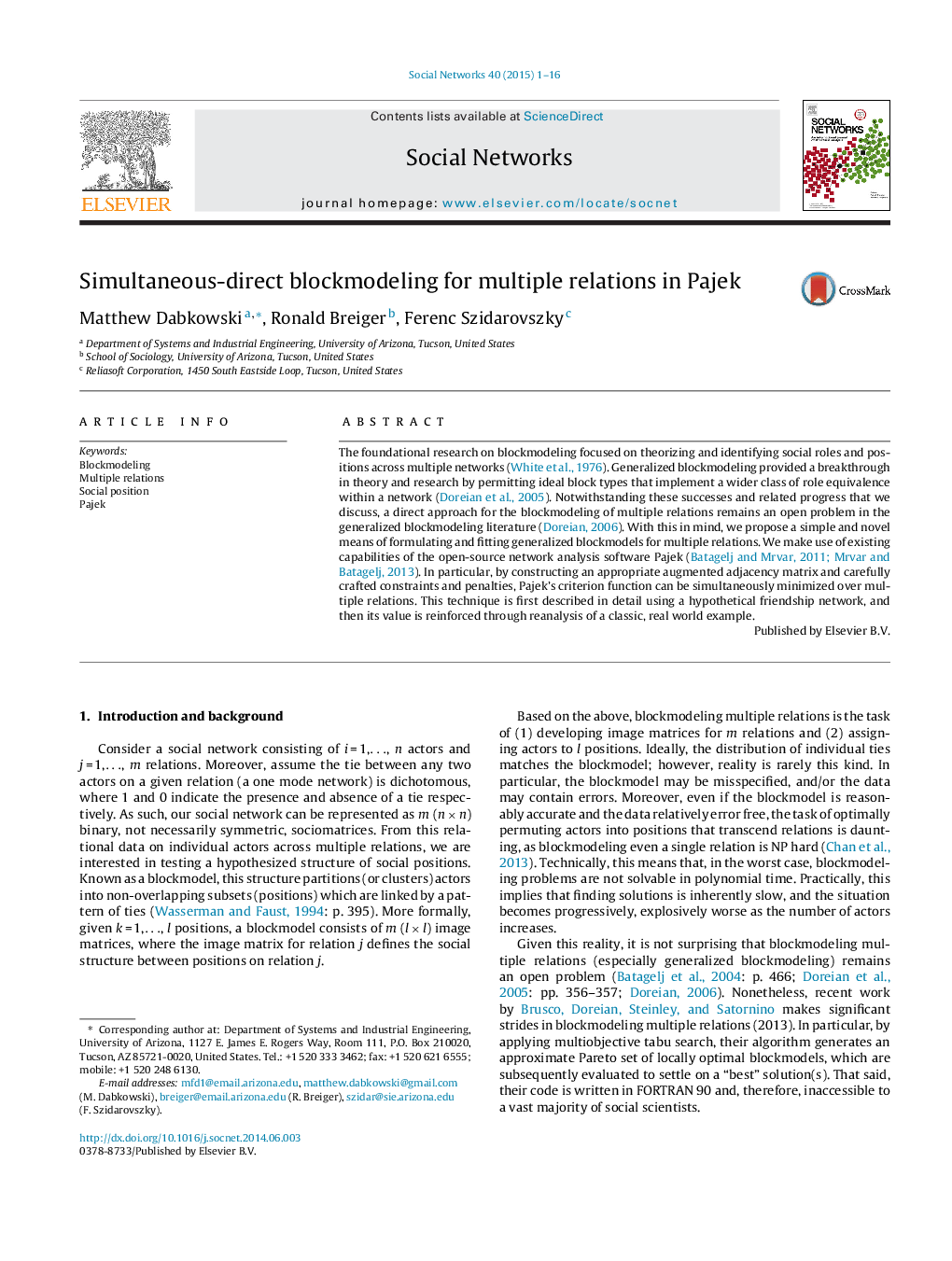| Article ID | Journal | Published Year | Pages | File Type |
|---|---|---|---|---|
| 1129149 | Social Networks | 2015 | 16 Pages |
•We show how to formulate and fit generalized blockmodels for multiple relations.•We propose a simple and novel procedure for accomplishing the above task.•We apply the Pajek network analysis software to multiple networks.•We provide illustrative examples as well as reanalysis of a classic network study.
The foundational research on blockmodeling focused on theorizing and identifying social roles and positions across multiple networks (White et al., 1976). Generalized blockmodeling provided a breakthrough in theory and research by permitting ideal block types that implement a wider class of role equivalence within a network (Doreian et al., 2005). Notwithstanding these successes and related progress that we discuss, a direct approach for the blockmodeling of multiple relations remains an open problem in the generalized blockmodeling literature (Doreian, 2006). With this in mind, we propose a simple and novel means of formulating and fitting generalized blockmodels for multiple relations. We make use of existing capabilities of the open-source network analysis software Pajek (Batagelj and Mrvar, 2011 and Mrvar and Batagelj, 2013). In particular, by constructing an appropriate augmented adjacency matrix and carefully crafted constraints and penalties, Pajek's criterion function can be simultaneously minimized over multiple relations. This technique is first described in detail using a hypothetical friendship network, and then its value is reinforced through reanalysis of a classic, real world example.
